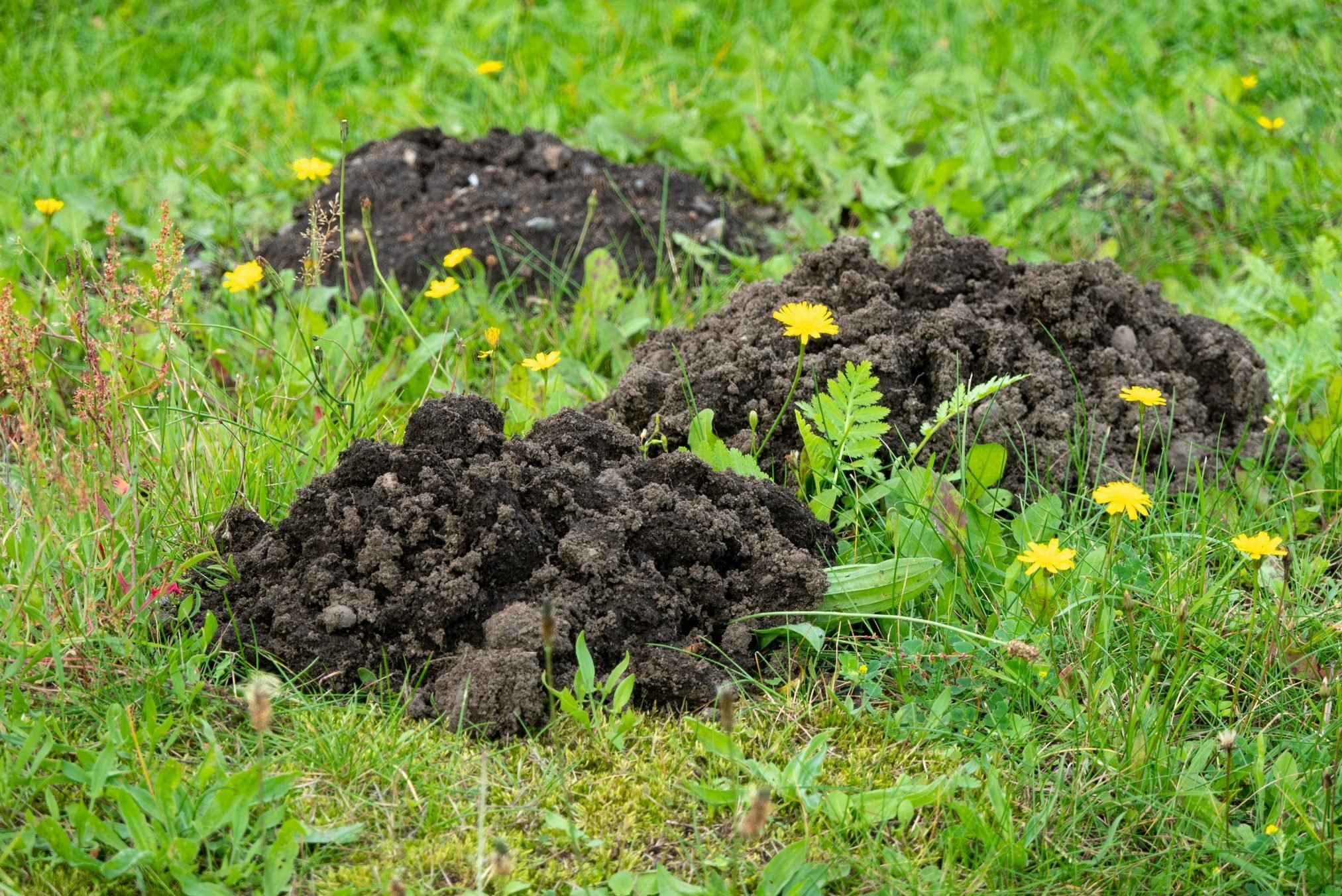Mole tunnels have rooms, including kitchens for storing earthworms to eat later. Learn the signs of moles in your yard.

Signs You Have Moles in Your Yard

Because they live underground most of their lives, moles have poor eyesight. But they aren’t blind. They’re good at detecting light, which helps them know the time of day and seasons of the year.
What they lack in eyesight, they gain in snout and claw sensitivity. According to researchers at Vanderbilt University, moles can smell in stereo, meaning each nostril smells independent of the other!
On This Page
What Moles Look Like
Though moles resemble rodents, they’re more closely related to hedgehogs and shrews. You’ll probably never see a mole in your yard because they’re almost always underground. In case they do pop up, here are some physical traits:
- Black, brown, orange or gray fur. There are also white albino moles.
- Small and rotund, four to seven inches long.
- Long, curved front feet with claws for tunneling. Their back feet are much smaller.
- Short tails.
- Fur sticks straight up so dirt slides off as they dig.
- Small eyes and ears, mostly hidden. Fun fact: Moles have great hearing. They can hear an insect drop into their tunnels and know how close it is!
What Attracts Moles
These features make your yard attractive to moles:
- Loose soil commonly found in fields, meadows and shady wooded areas.
- Plentiful insects, especially white grubs, earthworms, millipedes and snails. Mole eat their weight in insects daily.
- Fungi.
Signs of Moles in Your Yard
Meg Pearson, technical training manager at Critter Control, says, “Moles feed on insects and earthworms below the surface. Mole damage is associated with their tunneling.”
Moles do most of their digging after rains, and in spring and fall when the soil is easier to dig. Here are some signs you have moles:
- Shallow tunnels on or just below the ground, with piles of soil at either end and sometimes in the middle. The tunnels create an uneven surface.
- The ground feels squishy underfoot. After a hard rain the tunnels can sink, making the ground uneven and hard to walk on.
- Molehills. As they burrow in search of food, the soil gets pushed up into volcano-shaped two- to six-inch-high piles.
- Dead grass. Although moles don’t eat grass roots (like voles), they tunnel under grass and uproot it, which kills it.
Mole Control
Although moles are generally beneficial because of the insects, insect larvae and other invertebrates they eat, they can wreck the look of your yard. One option is to trap them. If you prefer, call a trained wildlife specialist for help.



















